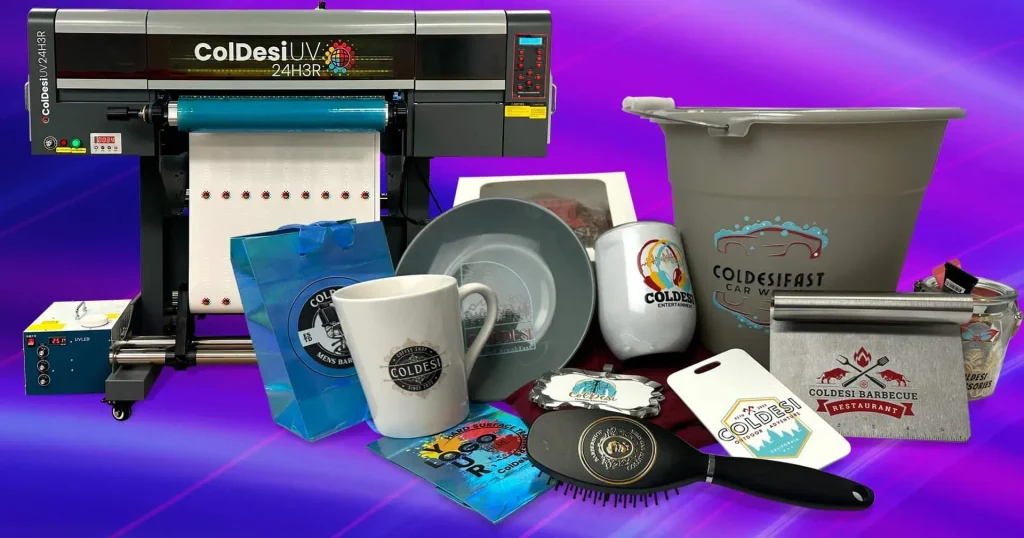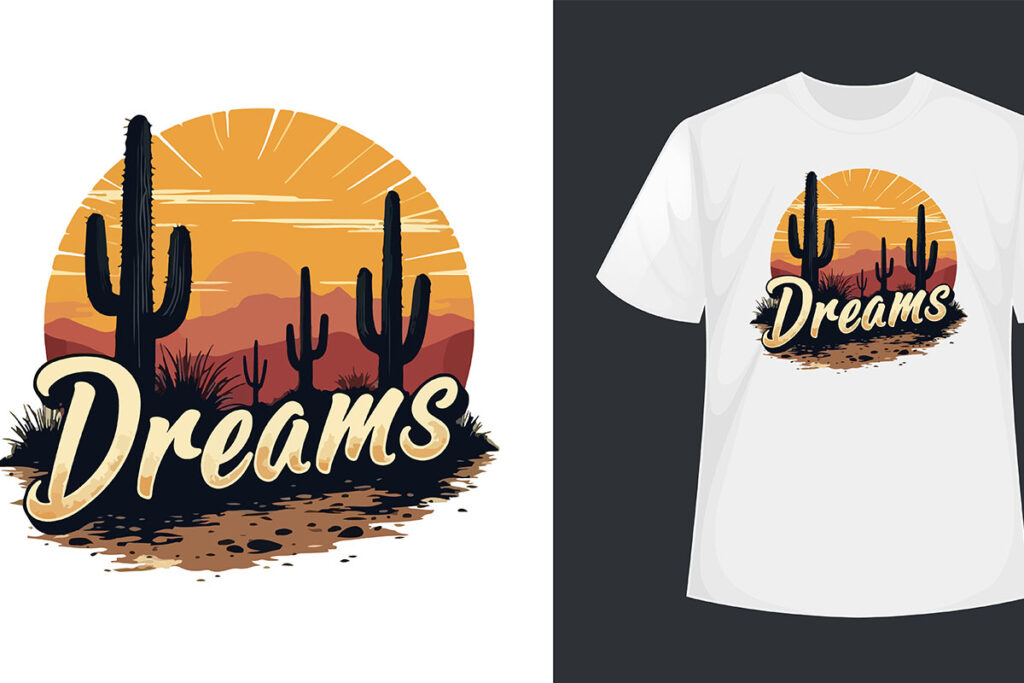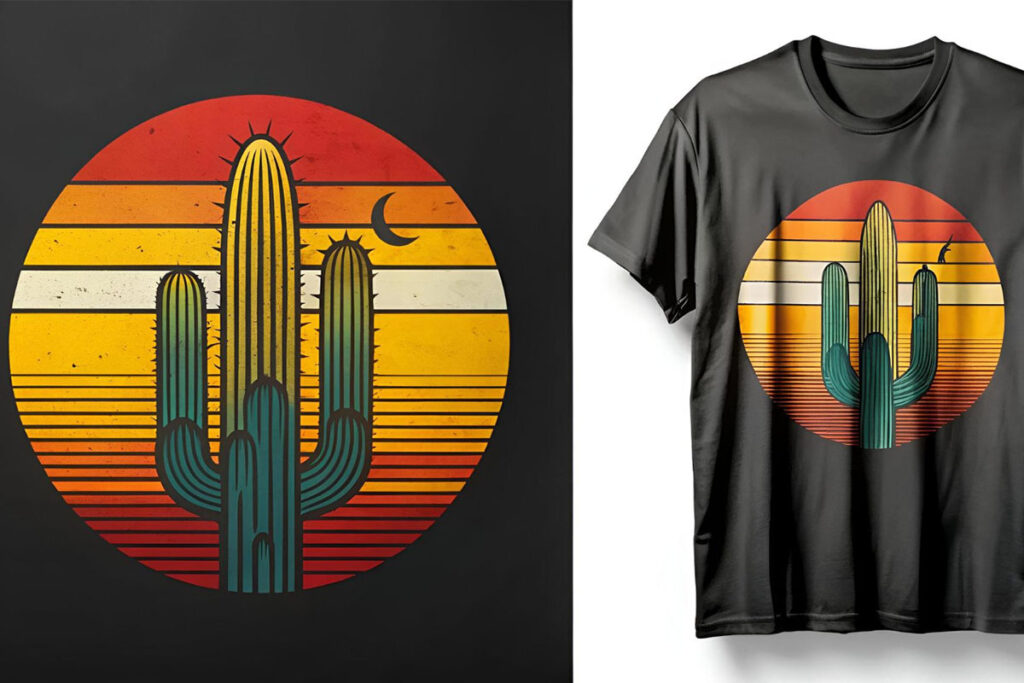UV DTF printing is at the forefront of innovation in the realm of digital printing technology. This method, which combines the benefits of UV printing technology with Direct to Film printing, is rapidly gaining traction due to its exceptional adaptability and eco-friendly advantages. With striking color vibrancy and robust durability, UV DTF printing caters to a diverse range of custom printing applications across various substrates, from fabric to metals. As advancements in UV printing continue to evolve, printers can now achieve high-resolution, long-lasting results that meet modern demands. In this article, we’ll delve deep into the fascinating world of UV DTF printing, exploring its features, economic impacts, and future direction.
The emergence of UV DTF printing represents a remarkable progression in digital imagery transfer techniques. Often referred to as Direct to Film technology complemented by ultraviolet curing, this printing solution is reshaping how graphics are applied to different materials. Its unique qualities enable professionals to achieve stunning, detailed designs while contributing to sustainable practices in the industry. Furthermore, the rapid advancements in ultraviolet inks and printing hardware are enhancing its appeal across various sectors. In the following sections, we will unpack the revolutionary aspects of UV DTF printing and its place in today’s innovative landscape.
Understanding UV DTF Printing Technology
UV DTF (Direct to Film) printing technology symbolizes a significant shift in the printing industry, combining rapid performance with unparalleled print quality. This innovative method utilizes ultraviolet-curable inks that bond swiftly to a variety of substrates, ensuring high-resolution imagery and durable results. Unlike traditional DTF printing methods, which typically rely on water-based inks, UV DTF offers a standout feature with its instant curing process. This capability means that prints can be handled almost immediately after production, streamlining workflow and increasing overall efficiency.
This technological prowess enables UV DTF printing to cater to diverse industries, from fashion to industrial design. The capability to print on an array of materials including textiles, plastics, and even metals extends the application potential significantly. As businesses seek ways to enhance their product offerings, UV DTF’s versatility allows for creativity in promotional items, custom apparel, and even home decor, making it an essential tool in the modern print toolkit.
The Advantages of UV DTF Printing
There are numerous advantages to utilizing UV DTF printing technology, making it an increasingly popular choice for businesses aiming to enhance their production capabilities. One of the most notable benefits is the superior quality of prints that UV inks provide; these inks offer vivid colors and exceptional longevity without fading due to light exposure or washing. This durability is especially important for businesses that need to ensure their printed products maintain their appearance over time, whether they are custom t-shirts or promotional banners.
Additionally, UV DTF printing stands out for its eco-friendly attributes, as it produces fewer volatile organic compounds (VOCs) compared to traditional printing methods. As consumer awareness and regulatory pressures for sustainable practices continue to rise, businesses adopting UV DTF technology align themselves with environmentally conscious practices. This commitment not only enhances a company’s brand image but also meets the demand for eco-friendly printing solutions.
Recent Innovations in UV DTF Printing
The advancements in UV DTF printing technology have led to groundbreaking improvements, setting a new standard in the printing industry. One of the significant innovations includes enhanced ink formulations designed to optimize print adhesion and durability on complex materials. These improvements enable businesses to broaden their product offerings, delving into more challenging substrates that were previously difficult to print on effectively. The innovation landscape promotes versatility, an essential quality in modern custom printing applications.
Furthermore, users have noted an increase in the availability of user-friendly printers that incorporate intuitive software to streamline the printing process. Such progress lowers the barriers for entry into high-quality printing, allowing smaller businesses to access professional-grade tools previously reserved for larger enterprises. This trend toward democratization of technology reflects a pivotal shift in enabling creativity and innovation across various sectors.
Challenges in Adopting UV DTF Technology
Despite its remarkable advantages, adopting UV DTF printing comes with distinct challenges that businesses must navigate. One of the primary hurdles is the initial investment cost of acquiring the necessary machinery. For smaller companies or startups, the financial burden of purchasing high-end printers can be a significant deterrent to leveraging this advanced technology. This initial cost, coupled with the need for specialized inks and materials, can create a steep barrier to entry.
In addition to financial considerations, UV DTF printers require ongoing maintenance to sustain optimal printing quality. Regular upkeep can lead to additional expenses and necessitate a level of technical expertise that may not be readily available within smaller operations. Consequently, businesses must weigh the potential for higher-quality outputs against these ongoing operational requirements, ensuring they have the proper support and knowledge in place.
The Future of UV DTF Printing
The future of UV DTF printing is bright and continues to evolve as technology advances and demand grows. With increasing market awareness, businesses are beginning to recognize the competitive edge that UV DTF can provide. As more companies transition to this technology, the landscape will likely shift, allowing for more innovative applications across different sectors, from standard printing to bespoke custom designs.
As the industry advances, we may also witness further innovations in UV ink formulations, enhancing performance and application potential even more. The continued focus on sustainability will keep eco-friendly printing solutions at the forefront of development efforts, helping to meet the increasing consumer demand for responsible production practices. Ultimately, as UV DTF printing technology matures, it promises to become an integral part of the customized printing market, offering limitless possibilities for creativity and application.
Exploring Custom Applications of UV DTF Printing
The versatility of UV DTF printing allows for an array of custom applications, making it a favored choice for businesses looking to create unique products. Whether it’s a promotional product like branded merchandise or intricately designed custom clothing, the technology can cater to various creative demands. The ability to print on materials ranging from fabric to metal adds an incredible dimension to product offerings, enabling companies to meet customer demands with precision.
The personal customization aspect is particularly appealing in today’s market, where consumers seek individuality in products. Instead of standard items, businesses can leverage UV DTF printing to create genuinely personalized products that resonate with their audience. This aspect of UV DTF printing not only enhances customer satisfaction but also encourages brand loyalty among consumers who appreciate unique offerings tailored to their preferences.
Frequently Asked Questions
What is UV DTF printing and how does it work?
UV DTF printing, or UV Direct to Film printing, combines UV printing technology with Direct to Film methods, allowing for high-resolution images to be transferred from films onto various substrates. It utilizes UV-reactive inks that instantly cure upon UV light exposure, resulting in vibrant and durable prints.
What are the eco-friendly benefits of UV DTF printing?
UV DTF printing offers eco-friendly printing solutions by using UV inks that produce minimal volatile organic compounds (VOCs). This significantly reduces the environmental impact compared to traditional solvent-based inks, making it a sustainable choice for businesses aiming to reduce their carbon footprint.
What advancements in UV printing technology have benefitted UV DTF printing?
Recent advancements in UV printing technology, especially in ink formulations, have enhanced adhesion and durability on various substrates. These innovations allow UV DTF printing to cater to demanding applications, expanding its appeal and capabilities in the custom printing market.
Can UV DTF printing be used on different types of materials?
Yes, UV DTF printing is highly versatile and can be applied to a wide range of materials including textiles, plastics, wood, and metals. This capability opens up numerous custom printing applications, allowing designers to create unique products across various industries.
What are the challenges associated with adopting UV DTF printing?
While UV DTF printing offers numerous benefits, challenges include high initial investment costs for machinery, ongoing maintenance needs, and the necessity for staff training to effectively operate the printers. Addressing these hurdles is essential for businesses considering this technology.
How does UV DTF printing compare to traditional DTF printing?
UV DTF printing differs from traditional DTF printing primarily through its use of UV-reactive inks that cure instantly, resulting in sharper details and enhanced vibrancy. Additionally, UV DTF printing provides better durability and can be applied to a wider variety of substrates, making it a superior choice in many printing applications.
| Aspect | Details |
|---|---|
| Introduction | UV DTF printing combines UV technology with DTF processes, offering vibrant colors and durability. |
| Key Features | Direct ink transfer, substrate compatibility, eco-friendliness, fast production, and high-resolution quality. |
| Recent Developments | Innovations in ink, market growth, user-friendly equipment, and custom applications are on the rise. |
| Challenges | High initial investment, maintenance needs, and skill requirements can hinder adoption. |
Summary
UV DTF printing is a groundbreaking method that offers unparalleled efficiency and quality in the realm of digital printing. By utilizing UV-reactive inks and a direct transfer approach, this technique ensures that prints are vibrant and resistant to external factors like fading and washing. As the technology continues to evolve, with innovations in ink formulations and user-friendly equipment, more businesses are recognizing the advantages of UV DTF printing. This adaptable method not only caters to various substrates ranging from textiles to metal but also aligns with eco-friendly practices, making it a preferred choice for modern printing needs. By overcoming challenges related to cost and skill requirements, UV DTF printing has the potential to significantly transform the future of customized printing solutions.



